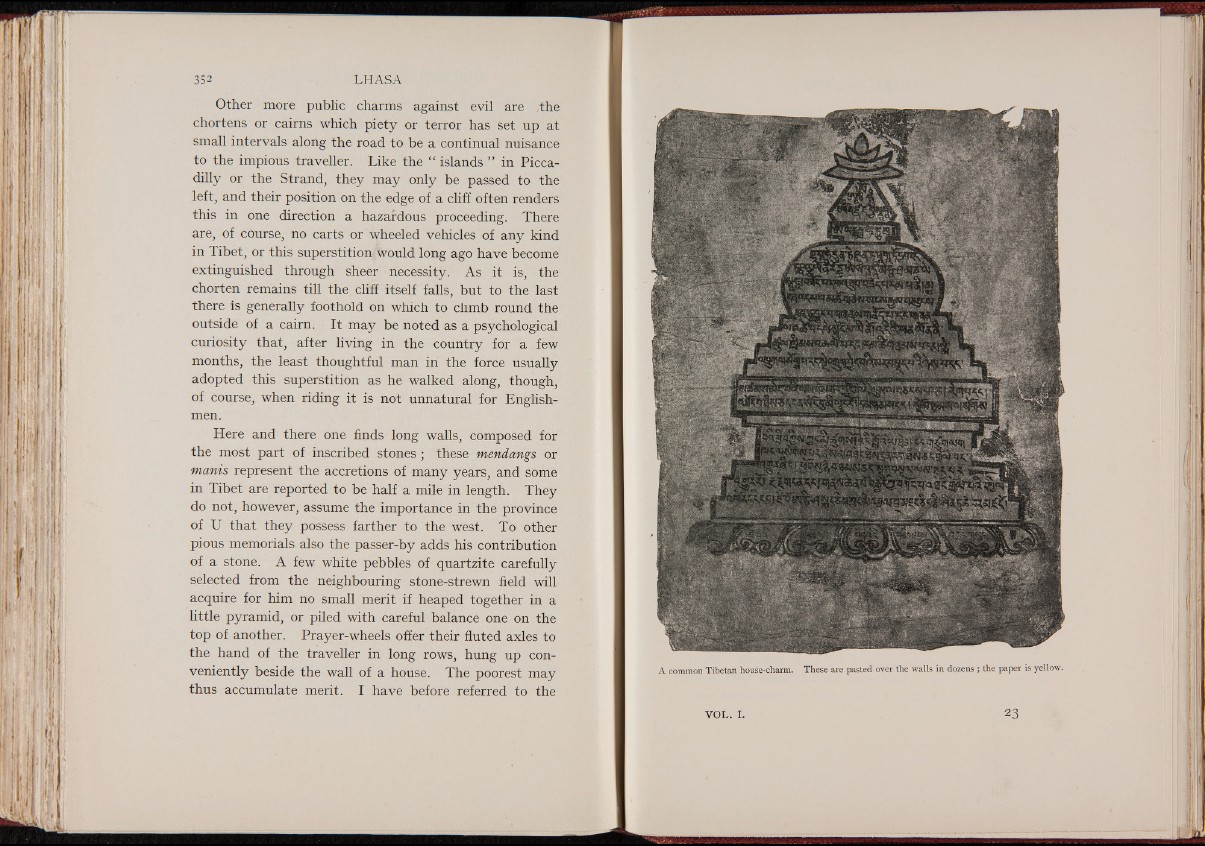
Other more public charms against evil are the
chortens or cairns which piety or terror has set up at
small intervals along the road to be a continual nuisance
to the impious traveller. Like the “ islands ” in Piccadilly
or the Strand, they may only be passed to the
left, and their position on the edge of a cliff often renders
this in one direction a hazardous proceeding. There
are, of course, no carts or wheeled vehicles of any kind
in Tibet, or this superstition would long ago have become
extinguished through sheer necessity. As it is, the
chorten remains till the cliff itself falls, but to the last
there is generally foothold on which to climb round the
outside of a cairn. It may be noted as a psychological
curiosity that, after living in the country for a few
months, the least thoughtful man in the force usually
adopted this superstition as he walked along, though,
of course, when riding it is not unnatural for Englishmen.
Here and there one finds long walls, composed for
the most part of inscribed stones ; these mendangs or
manis represent the accretions of many years, and some
in Tibet are reported to be half a mile in length. They
do not, however, assume the importance in the province
of U that they possess farther to the west. To other
pious memorials also the passer-by adds his contribution
of a stone. A few white pebbles of quartzite carefully
selected from the neighbouring stone-strewn field will
acquire for him no small merit if heaped together in a
little pyramid, or piled with careful balance one on the
top of another. Prayer-wheels offer their fluted axles to
the hand of the traveller in long rows, hung up conveniently
beside the wall of a house. The poorest may
thus accumulate merit. I have before referred to the
A common Tibetan house-charm. These are pasted over the walls in dozens ; the paper is yellow.
VO L. I. 23
¡U n i